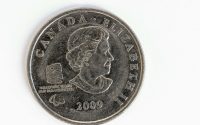Human Remains Trafficked to New York as Art Have Been Returned to Pacific Island of Vanuatu by the FBI
After an eight-year investigation by the FBI, human remains that were trafficked to New York as art have finally been repatriated on the Pacific island of Vanuatu.
The Vanuatu Cultural Center, the island’s national museum, received a crate last week—escorted by US intelligence and security agents—containing the skull of a man from an Indigenous Malakula hill tribe.
Kami, a curator at the museum, told NBC News that he knew what it was instantly. “By looking at it, I knew straight away,” he said. “I recognize it, where it belongs, up in the bush.”
Four more crates containing human relics were returned to the island by the FBI during a ceremony in its capital city, Port Vila, on Thursday.
They included a pair of human skulls molded with mud and three large effigies known as rambaramps. Each effigy contained a man’s skull that was painted with scenes depicting the final stages of his life.
The remains were seized by the FBI in 2016 from the estate of a dead collector who lived in New York. They had acquired around 200 sacred items from Indigenous cultures around the world. It’s thought that the relics from Vanuatu were stolen from a sacred man’s village house.
Chris McKeough, who works for the FBI’s art crime team, was at the ceremony in Port Vila. “New York is the art capital of the world, and because of that, is the art crime capital of the world,” he said in an interview with NBC. “We don’t know who looted them or took them out of the country, but there is a market in the world for human remains, they are trafficked unfortunately and they are collected.”
McKeough added that the size and weight of the Vanuatu effigies posed the greatest logistical challenge the FBI’s crime team has ever faced. The largest is almost 12 foot long and weighs in at 700 pounds. “They are extremely fragile, probably the most fragile objects that we have ever come across,” he said.



